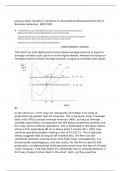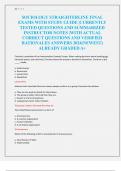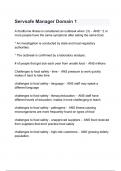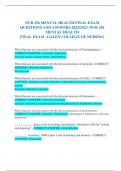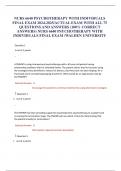Essay
Evaluate whether a firm should always shut down if its costs of production are greater than its revenue - 20/20 Full Economics Essay Answer: January 2021 Economics Unit 3 Paper on Business Behaviour (WEC13/01)
- Course
- Institution
- Book
This is a full mark (20/20) essay written for Question 10, section C of the January 2021 Economics Unit 3 Paper on Business Behaviour (WEC13/01). It answers: "Evaluate whether a firm should always shut down if its costs of production are greater than its revenue. Refer to an industry of your choice...
[Show more]
